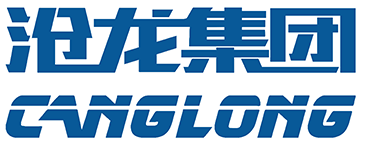PU sandwich 3-wave roof panel efficient building enclosure solution
In the global construction field, with the intensification of climate change, rising energy costs and the advancement of sustainable development goals, the efficiency and adaptability of building envelope structures have become key issues. Traditional roof panels (such as ordinary color steel plates, concrete panels) are gradually unable to meet diverse needs in terms of insulation, weight, construction efficiency, etc., and PU sandwich 3-wave roof panel (polyurethane sandwich 3-wave corrugated metal panels) are becoming star products in the fields of industry, commerce and civil construction with their unique structural design and comprehensive performance.
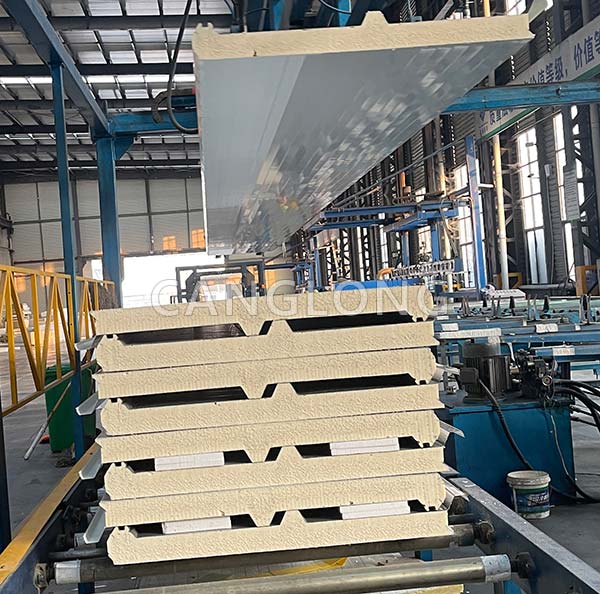
1. Structural characteristics of PU sandwich 3-wave roof panel
PU sandwich 3-wave roof panel is a “sandwich” composite panel, the core of which is composed of three parts: upper and lower metal panels + middle polyurethane (PU) core material, where “3 waves” specifically refers to the corrugated shape of the panel with a wave height of 30mm (some standards define it as the height from the crest to the trough). Its structural design deeply integrates material properties and engineering requirements, which are specifically manifested in the following features:
1.1 Dual metal panel
The surface metal usually uses 0.4-0.8mm thick hot-dip galvanized steel plate, aluminum-magnesium-manganese alloy or aluminum-zinc-plated steel plate, and the surface can be treated with baking paint, lamination, etc. to enhance corrosion resistance. The metal panel not only provides overall rigidity, but also bears external loads (such as wind loads and snow loads). At the same time, it acts as a barrier to isolate the core material from ultraviolet rays, rain, etc., and prolongs the life of the board (the design life is generally 25-50 years).
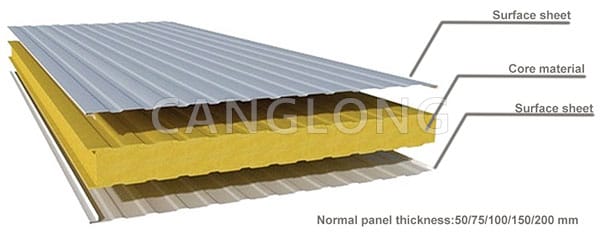
1.2 Polyurethane core material
The middle core material is rigid polyurethane foam (PU), with a density of usually 35-60kg/m³ and a thermal conductivity as low as 0.022-0.027W/(m·K) (about 1/20 of concrete and 1/10 of brick wall). The high closed-cell rate (≥90%) of PU material gives it excellent thermal insulation and moisture-proof performance. At the same time, the controllable density design can balance the weight of the board (total weight is about 3-8kg/m², which is only 1/10-1/5 of the concrete board).
1.3 three wave waveform
Different from 2-wave (wave height 20mm) or 4-wave (wave height 40mm) waveforms, the 3-wave design achieves a balance between drainage efficiency, wind resistance stability and material consumption through the golden ratio of wave height and wave distance (usually wave distance is 180-250mm):
- Efficient drainage: The slope formed by the 30mm wave height can quickly guide rainwater away and avoid water infiltration (especially suitable for rainy areas).
- Strong wind resistance: The corrugated structure enhances the rigidity of the panel through ribs, and with self-tapping screws or hidden snap-on connections, it can withstand 10-12 level typhoons (fixed spacing needs to be adjusted according to local climate).
- Economical and practical: Compared with 4-wave boards, 3-wave boards use less material and are lower in cost. Compared with 2-wave panels, the bearing capacity is increased by about 30%, which is more suitable for large-span scenarios (the maximum unsupported span can reach 12-15 meters).
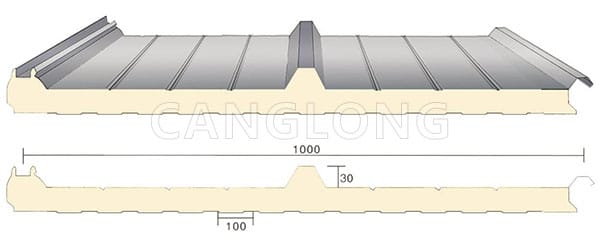
2. Core advantages
The competitiveness of PU sandwich 3-wave roof panel come from its precise response to building needs, especially in the four dimensions of thermal insulation, light weight and high strength, convenient construction, and full-cycle cost:
2.1 Superior thermal insulation, reducing energy consumption costs
Against the background of high global energy prices, the heat loss of buildings is one of the main burdens of operating costs. The low thermal conductivity of PU core material can reduce the roof heat transfer coefficient (U value) to 0.25-0.35W/(m²·K) (ordinary color steel plate is only 1.0-1.5W/(m²·K)), combined with the reflective effect of the double-layer metal panel (aluminum magnesium manganese surface reflectivity> 80%), it can reduce the heating/cooling energy consumption of buildings by 30%-50%. This is crucial for winter insulation in cold regions (such as Northern Europe and Northeast China) and summer insulation in hot regions (such as the Middle East and Southeast Asia).
2.2 Lightweight and high-strength, suitable for complex scenarios
The self-weight of traditional concrete roofs can reach 1.5-3 tons/m², requiring additional foundation reinforcement. The PU sandwich 3-wave roof panel is only 3-8kg/m², which can be directly fixed on a light steel structure or concrete frame, greatly reducing the foundation cost. At the same time, the compressive strength (core material compressive strength ≥ 150kPa) and impact resistance (no cracks in the drop ball impact test) given by its corrugated structure can meet the needs of industrial plant stacking, logistics warehouse forklift rolling and other scenarios.
2.3 Quick installation, shortened construction period
The modular design (customizable length, up to 12 meters) and standardized connection (self-tapping screws + sealing strips) increase the installation efficiency by more than 50%. Only 2-3 people are needed to complete the hoisting and fixing of a single plate, without the need for large machinery, which is especially suitable for remote areas or emergency projects (such as temporary buildings for disaster relief and reconstruction of disaster areas).
2.4 Low cost and sustainable development
Although the initial purchase cost is slightly higher than that of ordinary color steel plates (about 10%-20% higher), its maintenance-free (metal panel weather resistance ≥ 25 years), low energy consumption (reduced use of air conditioning), recyclable (metal panel recycling rate > 90%, PU core material can be crushed and reused) and other characteristics reduce the life cycle cost by more than 30%. This is in line with global policy orientations such as the EU’s “Green New Deal” and China’s “Dual Carbon” goals, helping buildings obtain green certifications such as LEED and BREEAM.
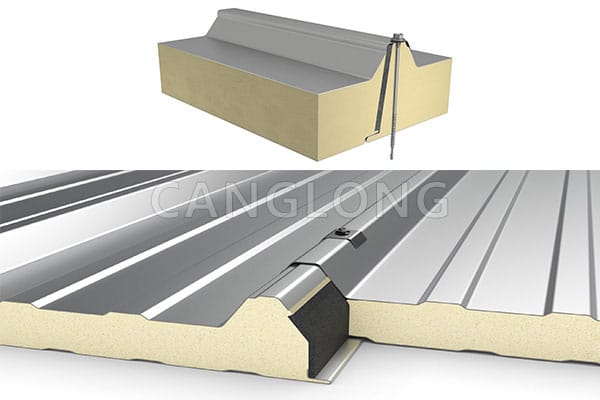
3. Analysis of global applicable regions
PU sandwich 3-wave roof panels are highly adaptable, but the climate characteristics, building types, and policy orientations of different regions will further amplify their advantages. Combined with global climate zoning and market demand, the following regions are particularly suitable for promotion:
3.1 Cold regions: North America, Northern Europe, Northeast China
North America (such as Canada, northern United States), Northern Europe (Sweden, Norway) and Northeast China (Heilongjiang, Jilin) have long and cold winters (extreme low temperatures below -30℃), and heating accounts for more than 60% of building energy consumption. The high thermal insulation of PU sandwich 3-wave roof panel can directly reduce heating energy consumption. In conjunction with local strict building energy-saving regulations (such as US ASHRAE 90.1, EU EPBD Directive), it has become the first choice for public buildings such as industrial plants, schools, and hospitals. For example, in the logistics warehousing project in Ontario, Canada, the use of this panel reduced the winter heating cost by 42% compared with traditional color steel panels.
3.2 Hot and humid areas: Southeast Asia, South Asia, South China
Southeast Asia (Thailand, Vietnam), South Asia (India, Bangladesh) and South China (Guangdong, Fujian) have high temperature and high humidity throughout the year (average annual humidity>80%, and the highest temperature in summer is above 40℃). Traditional color steel plates are prone to internal corrosion due to condensation, and insufficient insulation causes stuffiness indoors. The low thermal conductivity (reducing air conditioning load) and high closed porosity (preventing water vapor penetration) of the PU sandwich 3-wave roof panel can solve these two problems simultaneously. In the electronics factory renovation project in Mumbai, India, after using this panel, the temperature in the workshop was reduced by 8-10℃ compared with the traditional roof, and the equipment failure rate caused by condensation water decreased by 90%.
3.3 Windy/typhoon areas: Japan, the Philippines, and the southeast coast of China
Japan (typhoon-prone area), the Philippines (average 10-15 typhoons per year) and the southeast coast of China (Guangdong, Hainan) need to deal with typhoons above level 12 (wind speed>32m/s). The corrugated structure of the PU sandwich 3-wave roof panel is combined with the rigidity of the metal panel, and the concealed connection of self-tapping screws and sealing strips (to avoid leakage in traditional bolt holes) can effectively resist the risk of overturning in strong winds. In the industrial plant project in Okinawa, Japan, the panel has passed the actual test of 12-level typhoon and has become the wind-resistant roofing material recommended by the local government.
3.4 Ecologically sensitive areas: Europe and Oceania
The European Union (Germany, France), Australia and New Zealand and other regions have strict requirements on building carbon emissions (for example, the EU’s building carbon emissions in 2030 must be reduced by 50% compared with 1990), and advocate the concept of low-impact architecture. The lightweight (reduced transportation energy consumption), recyclable (metal panel recycling), and low maintenance (reduced chemical anti-corrosion treatment) characteristics of the PU sandwich 3-wave roof panel perfectly match the local green building standards (such as Germany’s DGNB and the UK’s BREEAM). In the low-carbon community project in Berlin, Germany, the panel was included in the core technology system of “zero-carbon building”.
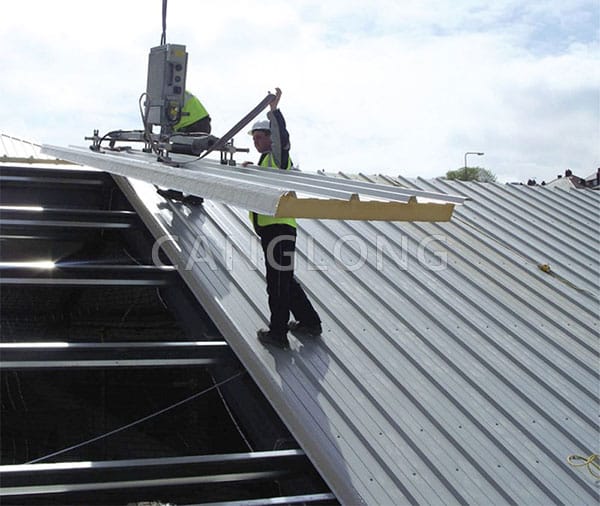
4. Conclusion
PU sandwich 3-wave roof panels are not a universal material, but their comprehensive balance of thermal insulation, light weight, and construction efficiency enables them to find suitable scenarios in different climate zones and different building types around the world. With the deepening of global energy transformation and green buildings, its core advantages will be further highlighted. Reduce energy consumption in cold areas, solve the contradiction between moisture-proof and heat insulation in hot and humid areas, ensure structural safety in typhoon areas, and help achieve carbon neutrality goals in ecologically sensitive areas.
In the future, with the upgrading of polyurethane materials (such as bio-based PU research and development) and the optimization of production processes (such as thinner and stronger core materials), PU sandwich 3-wave roof panel is expected to move from regional optimization to global standard configuration, becoming the next generation mainstream choice for building envelope structures.
